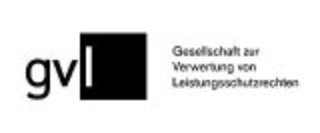
A copyright is a type of intellectual property that gives the creator of an original work, or another right holder, the exclusive and legally secured right to copy, distribute, adapt, display, and perform a creative work, usually for a limited time. The creative work may be in a literary, artistic, educational, or musical form. Copyright is intended to protect the original expression of an idea in the form of a creative work, but not the idea itself. A copyright is subject to limitations based on public interest considerations, such as the fair use doctrine in the United States.

Moral rights are rights of creators of copyrighted works generally recognized in civil law jurisdictions and, to a lesser extent, in some common law jurisdictions.

To publish is to make content available to the general public. While specific use of the term may vary among countries, it is usually applied to text, images, or other audio-visual content, including paper. Publication means the act of publishing, and also any copies issued for public distribution.

The history of copyright starts with early privileges and monopolies granted to printers of books. The British Statute of Anne 1710, full title "An Act for the Encouragement of Learning, by vesting the Copies of Printed Books in the Authors or purchasers of such Copies, during the Times therein mentioned", was the first copyright statute. Initially copyright law only applied to the copying of books. Over time other uses such as translations and derivative works were made subject to copyright and copyright now covers a wide range of works, including maps, performances, paintings, photographs, sound recordings, motion pictures and computer programs.
In Germany, photo rights or "Bildrechte" are the copyrights that are attached to the "author" of the photograph and are specified in the "Law for Copyright and similar Protection". These rights deal with rights of reproduction, distribution, modification, attribution, and prohibitions against illegal modification or reproduction. The ownership rights of a picture are treated under the broader "art copyright laws". Furthermore, if a museum or gallery owns a work of art or a photograph, they are permitted to make their own stipulations as to the selling of illustrations and reproductions of their property. This relates to the German legal concept of the right of owner to undisturbed possession. Wolf Vostell said: "Copyrights are like human rights".

The Gesellschaft für musikalische Aufführungs- und mechanische Vervielfältigungsrechte is a government-mandated collecting society and performance rights organization based in Germany, with administrative offices in Berlin and Munich. GEMA represents the usage rights stemming from authors' rights for the musical works of those composers, lyricists, and publishers who are members in the organization. It is the only such institution in Germany and a member of BIEM and CISAC. Other collecting societies include the (AKM) Society of authors, composers and music publishers in Austria and SUISA in Switzerland.
The copyright law of Switzerland is based on the concept of "author's rights", which is similar to the French copyright law, instead of the concept of copyright used in common law jurisdictions. The current copyright law of Switzerland is the Swiss Federal Copyright Act of 1992, which dates from October 9, 1992 and has only seen minor revisions since then. In October 2007, a revision was approved in order to implement the WIPO Copyright Treaty in the act, a process started in 2004 with the release by the Swiss Federal Council of a draft project.
Publication right is a type of copyright granted to the publisher who first publishes a previously unpublished work after that work's original copyright has expired. It is in almost all respects the same as standard copyright, but excludes moral rights. Publication right is mainly found in the law of European countries and has no direct correspondence in US copyright law. Within the European Union, not all countries originally had such a right, and where it was provided terms varied, but in 1993 national laws were required to be harmonized by EU Directive 93/98/EEC to provide standard period of protection of 25 years from first publication.
"Author's rights" is a term frequently used in connection with laws about intellectual property.

In copyright law, related rights are the rights of a creative work not connected with the work's actual author. It is used in opposition to the term "authors' rights". Neighbouring rights is a more literal translation of the original French droits voisins. Both authors' rights and related rights are copyrights in the sense of English or U.S. law.

The Satellite and Cable Directive, formally the Council Directive 93/83/EEC of 27 September 1993 on the coordination of certain rules concerning copyright and rights related to copyright applicable to satellite broadcasting and cable retransmission, is a European Union directive that governs the application of copyright and related rights to satellite and cable television in the European Union. It was made under the internal market provisions of the Treaty of Rome.
The rule of the shorter term, also called the comparison of terms, is a provision in international copyright treaties. The provision allows that signatory countries can limit the duration of copyright they grant to foreign works under national treatment to no more than the copyright term granted in the country of origin of the work.

Freedom of panorama (FOP) is a provision in the copyright laws of various jurisdictions that permits taking photographs and video footage and creating other images of buildings and sometimes sculptures and other art works which are permanently located in a public place, without infringing on any copyright that may otherwise subsist in such works, and the publishing of such images. Panorama freedom statutes or case law limit the right of the copyright owner to take action for breach of copyright against the creators and distributors of such images. It is an exception to the normal rule that the copyright owner has the exclusive right to authorize the creation and distribution of derivative works.

The Berne Convention for the Protection of Literary and Artistic Works, usually known as the Berne Convention, was an international assembly held in 1886 in the Swiss city of Bern by ten European countries with the goal of agreeing on a set of legal principles for the protection of original work. They drafted and adopted a multi-party contract containing agreements for a uniform, border-crossing system that became known under the same name. Its rules have been updated many times since then. The treaty provides authors, musicians, poets, painters, and other creators with the means to control how their works are used, by whom, and on what terms. In some jurisdictions these type of rights are referred to as copyright; on the European continent they are generally referred to as author' rights or makerright.
The philosophy of copyright considers philosophical issues linked to copyright policy, and other jurisprudential problems that arise in legal systems' interpretation and application of copyright law.

The ancillary copyright for press publishers is a proposal incorporated in 2012 legislation proposed by the ruling coalition of the German government, led by Angela Merkel of the Christian Democratic Union (CDU), to extend publishers' copyrights. The bill was agreed by the Cabinet at the end of August 2012 and submitted to parliament on 14 November 2012. It was passed by the Bundestag on 1 March 2013 by 293 to 243, following substantial changes in the week before the vote.

A collective work is a work that contains the works of several authors assembled and published under the direction of one natural or legal person who owns the copyright in the work as a whole. Definitions vary considerably from one country to another, but usually treat ownership of the work as a whole as distinct from ownership of the individual contributions, so the individual authors may retain the right to publish their work elsewhere. It is common for publication of articles on the Internet, when isolated from the context of the overall work, to be considered to be outside of the standard agreement between the author and the owner of the collective work.

The GVL is a German music copyright collection society that represents the interests of performing artists and producers of sound recordings. Its German name translates to English as "Society for the exploitation of ancillary copyrights".
The Central Office for Private Transfer Rights is an amalgamation of Nine German Copyright Collection Societies GEMA, GÜFA, GVL, GWFF, TWF, VFF, VGF, VG Picture Art and VG World. Its legal form is that of a Company under civil law based in Munich. Its function is to centrally assert the copyright compensation claims of the collecting societies involved in the reproduction of audio works and audiovisual works for private and other personal use and then to distribute the proceeds to the collecting societies. In 2017, the total distribution was around 575 million euros. New private copying levies agreed to by German trade association Bitkom and ZPÜ in December 2015 likely caused Apple to slightly raise the price of its iPhone and iPad prices in Germany on 1 January, 2016. In 2018 the GVL benefited from back payments and adjustments in the private copying sector in the previous years ZPÜ with the GVL paying out a total of €287 million to producers and artists in 2018, using a new system for distributions.
Gerhard Schricker was a German legal scholar with a focus on intellectual property and competition law. He was a full professor at Ludwig Maximilian University of Munich from 1973 to 2000 and served as Director of the Munich-based Max Planck Institute for Foreign and International Patent, Trademark, and Copyright Law between 1971 and 2003.









